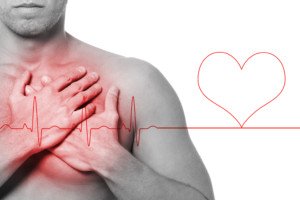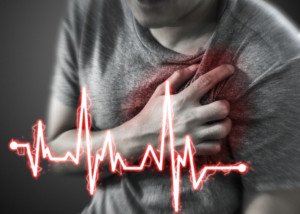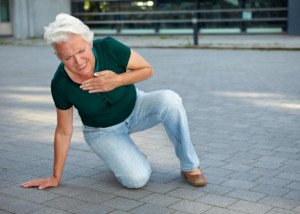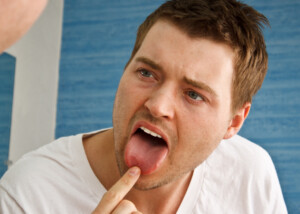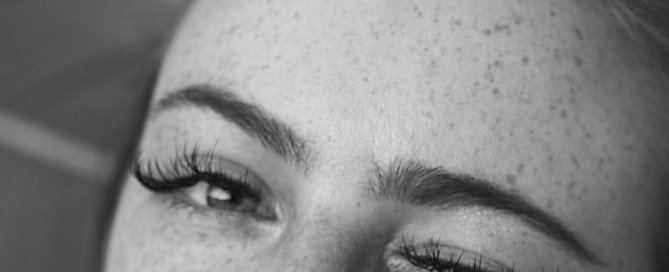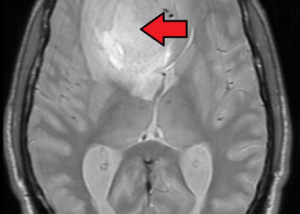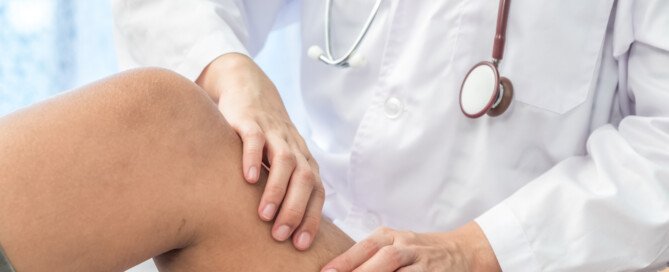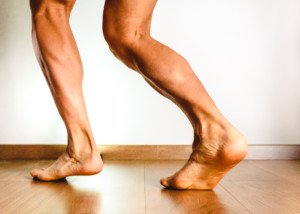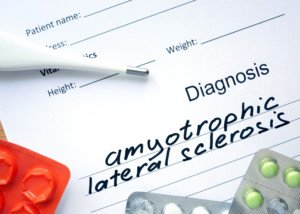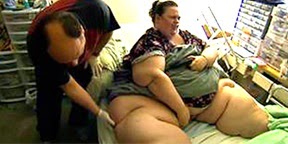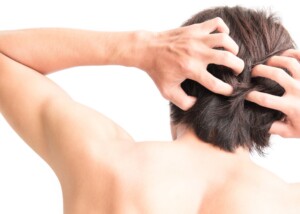Cause of Extreme Fatigue After Strenuous Exercise?

You might be surprised when you find out what the causes of extreme fatigue following exercise is.
“Mostly fatigue comes from deconditioning, dehydration, uncontrolled hypertension and psychological as the most common reasons,” says Dr. Cynthia Thaik, MD, cardiologist and author of “Your Vibrant Heart,” which can be can be purchased at amazon.com.
As a fitness expert, I was surprised when I came upon the question of “What causes extreme fatigue after strenuous exercise?” in a health forum.
By definition, strenuous exercise will cause extreme fatigue!
That’s why it’s called strenuous, or very intense, or high intensity.
So if you’re doing sprints up a hill and wondering why, at the top, you must lean over, hands on knees, and are unable to speak for 30 seconds because you’re panting so heavily, this is normal. You just ran up a hill.
The same breathlessness or extreme fatigue will result if you run up multiple flights of stairs fast enough, do nonstop squat jumps for 30 seconds or pedal a stationary bike as fast as you can at medium tension for 30 seconds.
What’s strenuous or very intense is relative, too. To the deconditioned person, simply trotting, rather than running, up flights of stairs will exhaust them.
Brisk walking, rather than jogging or sprinting, up an incline will exhaust them.
As a personal trainer, I’ve had very deconditioned clients who allowed their mental state to contribute quite a bit to the fatigue following a level of exercise that to fitter individuals, would have qualified as a warm-up to them.
When is extreme fatigue after exercise something to be concerned about?

When you begin noticing that your warm-ups are beginning to feel like the actual workout—and this decline has occurred over a rather short period.
People will report that they’re “getting old.” This age-related decline in the fitness enthusiast is very, very gradual, over the years.
They can no longer run a mile in six minutes. It now takes seven, but this decline was very gradual.
However, a rapid decline is worrisome. Uncharacteristic fatigue from exercise that used to be a warm-up, or from activity that not too long ago hardly got your breathing rate up, is something to take strong notice of.
Dr. Thaik says, “Less common would be actual cardiac issues such as cardiomyopathy, heart failure, hypertensive heart disease, hypertrophic cardiomyopathy or lung conditions.”
There are also many non-cardiac causes of uncharacteristic fatigue following exercise levels that you used to handle pretty well.
Some that you’d never think of include celiac disease, low thyroid (hypothyroidism), overactive thyroid (hyperthyroidism), sleep apnea, side effects of medications, depression, anemia, chronic fatigue syndrome and diabetes.
An obvious consideration to many health conscious people would be cancer.
The most serious possible explanations should be investigated promptly.

Dr. Thaik’s clinical interests include congestive heart failure and women’s heart disease, and is affiliated with the American Heart Association.
 Lorra Garrick has been covering medical, fitness and cybersecurity topics for many years, having written thousands of articles for print magazines and websites, including as a ghostwriter. She’s also a former ACE-certified personal trainer.
Lorra Garrick has been covering medical, fitness and cybersecurity topics for many years, having written thousands of articles for print magazines and websites, including as a ghostwriter. She’s also a former ACE-certified personal trainer.
.
Top image: Freepik.com
Can Angina from Exertion Go Away if Activity Continues?

If physical exertion brings on angina, will the angina necessarily persist as long as the activity does, or is it possible for it to disappear if the exercise continues?
Let’s assume that the physical activity is something that can be sustained, such as walking up a hill, walking the dog, pushing a lawnmower, etc.
Angina occurs when the supply (oxygenated blood) does not meet the demand (physical activity).
The most common symptoms are chest pain, pressure or tightness, and/or shortness of breath that’s out of proportion to the degree of physical effort.
Less commonly the person may have pain in the jaw, arm or back, or nausea.
“Symptoms can disappear as you continue the exertion,” says Dr. Cynthia Thaik, MD, cardiologist and author of “Your Vibrant Heart,” which can be purchased at amazon.com.
“This would depend on an intact and appropriately functioning endothelium,” she continues. The endothelium is the interior surface of the coronary arteries.
Dr. Thaik explains, “Ischemia (lack of blood flow) leads to angina. This will cause multiple local reactions within the downstream blood vessel including the change in pH (more acidity), release of cytokines and other inflammatory markers and the release of various biomarkers, hormones and the initiation of various enzymatic processes.
“Assuming the endothelium is functioning appropriately, the response will be that of vasodilatation [expansion of the blood vessel] which would relieve the angina.
“If, however, the endothelium is dysfunctional, there will be vasoconstriction rather than vasodilatation, leading to more angina until the activity is stopped.
“This is the acute pathophysiology, but over time if sustained intermittent ischemia, then there would hopefully be the generation of collateral circulation, leading to improved anginal symptoms over time.”
Collateral circulation refers to the generation of new blood vessels that would assist the main coronary arteries in blood flow to the heart.
When symptoms of angina start appearing while a person is at rest rather than only during exercise, this means the condition of their coronary arteries has gotten a lot worse.
A visit with a cardiologist should be arranged promptly.

Dr. Thaik’s clinical interests include congestive heart failure and women’s heart disease, and is affiliated with the American Heart Association.
 Lorra Garrick has been covering medical, fitness and cybersecurity topics for many years, having written thousands of articles for print magazines and websites, including as a ghostwriter. She’s also a former ACE-certified personal trainer.
Lorra Garrick has been covering medical, fitness and cybersecurity topics for many years, having written thousands of articles for print magazines and websites, including as a ghostwriter. She’s also a former ACE-certified personal trainer.
.
Top image: Shutterstock/Andrey_Popov
Do Most Heart Attacks Occur in Low to Moderate Risk People?
So who is more likely to suffer a heart attack?
- Those at the so-called mild to moderate risk?
- Or those who have a high risk for heart attack?
- The answer is very compelling — given by a cardiologist.
You may have heard somewhere that most heart attacks or cardiac events occur in low to moderate risk people. But is this really a fact?
“Not true. More events will occur in those at the highest risk,” says Dr. Cynthia Thaik, MD, cardiologist and author of “Your Vibrant Heart,” which can be purchased at amazon.com.
“However, by shear numbers, given that more people exist in the low or moderate risk group and are still exposed to heart disease, the absolute number of events appears high in those with low or moderate risk.”
To put this another way, the percentage of people who experience a heart attack or cardiovascular event in the high risk group is larger than the percentage in the low to moderate risk population.
But the total number of heart attacks occur in the low to medium risk group.
If this is confusing, here’s an analogy that may clear it up:
Very elderly people are much more likely to get into a car accident than are people in their 30s. But many more car accidents involve 30-somethings — simply because there are far more 35-year-olds driving than 80-year-olds.
Dr. Thaik adds, “The main teaching or take-home point is that all people must be cognizant of heart disease and not be complacent because they think they are at low risk.
“It is important to be aware of risk factors and change lifestyle to modify the risk.”
Heart Attack Risk Factors
- Excessive daily sitting
- High consumption of processed foods
- Consumption of trans fats
- Diabetes
- High blood pressure
- Smoking
- Obesity
- Apple shaped body
- Lack of exercise
- Untreated sleep apnea
- Family history of heart attack

Dr. Thaik’s clinical interests include congestive heart failure and women’s heart disease, and is affiliated with the American Heart Association.
 Lorra Garrick has been covering medical, fitness and cybersecurity topics for many years, having written thousands of articles for print magazines and websites, including as a ghostwriter. She’s also a former ACE-certified personal trainer.
Lorra Garrick has been covering medical, fitness and cybersecurity topics for many years, having written thousands of articles for print magazines and websites, including as a ghostwriter. She’s also a former ACE-certified personal trainer.
.
Top image: Shutterstock/Y Photo Studio
Twitching Muscles: Know Your Muscle Twitching
Okay, muscle twitching is a hot topic in cyberspace. Millions of men and women have twitching muscles.
Many of them freak out and think muscle twitching means the deadly disease ALS because muscle twitching is an ALS symptom.
But don’t fear; twitching muscles is a part of normal muscle function.
We evolved to have twitchy muscles. A primary cause of muscle twitching is anxiety and stress.
Our muscles twitch in response to anxiety because they anticipate action. So they kind of get revved up; they twitch.
“Think about it–before a big interview, you might get a ‘nervous’ twitch in your leg or your arm,” begins John Whyte, MD, board certified internist in Washington, DC, and author of “Is This Normal? The Essential Guide to Middle Age and Beyond.”
He adds,“Sometimes even your eye and face. It typically lasts just a few seconds. It is all normal and related to neurotransmitters and hormones.
“Often when we are stressed it cause changes in blood flow. Think fight or flight.
“So when you get nervous and have an adrenaline rush, the twitching usually is in our hands and legs, since they are getting more blood flow and ready to rush to our defense if need be.
“We also believe that when we are stressed, our nerves are at a heightened sense of alertness, so sometimes our impulses fire off more easily.”
Strenuous exercise is also a major cause of muscle twitching, particularly strength training.

The more you get to know your muscles and their twitching habits, the more at ease you will be if muscle twitching frightens you.
A twitch of muscles can occur in any muscle that moves voluntarily. So think of which muscles you CANNOT move with free will.
Two muscles should come to mind: the heart and the uterus. The heart and uterus are muscles, but we cannot move them by will.
But all skeletal muscles are what are known as voluntary muscles because we can will them to move.
The Most Common Sites for Twitching Muscles
- Calves
- Eyelid
- Arches of feet
- Hamstrings (back of legs)
- Quadriceps (thighs)
- Butt
- Chest
- Back
- Neck
- Shoulders
- Arms
- Fingers
- Toes
However, people have claimed to experience muscle twitches at various points on their faces, such as:
- Above the upper lip
- Below the lower lip
- Forehead
- Temple
- Back of head
- Top of head
- Chin

The tongue is also a muscle, so this means that twitching can occur in the tongue.
This can scare the crap out of some people who know that tongue twitching is a symptom of what’s known as bulbar-onset ALS.
But you should know that by the time the ALS victim experiences bulbar twitching, he is already having difficulty swallowing, trouble chewing food and usually trouble speaking.
Read my interview with neurologist Kristina LaFaye, MD, about Bulbar-onset ALS.
If the hypochondriac gets carried away, his or her anxiety will cause him to perceive the sensation of difficulty swallowing, and he’ll begin “hearing” his speech become slurred.
These are imagined symptoms that fear causes.
If a muscle in a finger or toe twitches, it usually causes the finger or toe to jump, jitter or briefly shake. This can scare a person with health anxiety.
But if a muscle in a digit twitches, why WOULDN’T the digit jump? The digit is so small that muscle twitching will make it jump.

Shutterstock/Fh Photo
When muscles twitch, you can see the twitching. Sometimes the twitch length runs half a foot.
After doing pull-ups one day, the moment I stopped and took a seat, a thumping twitch developed in my chest.
The twitching persisted all day and evening, but was completely gone come next morning.
At the gym, I could easily view the twitching in the mirror, a horizontal twitch length of about five inches, kind of like something flashing beneath my chest muscle, right under the clavicle bone.
Something about the pull-ups triggered this, even though pull-ups do not target the chest muscles.
But chest muscles are antagonists to the back muscles in a pull-up, and this opposing relationship certainly had something to do with the twitches.
Get familiar with your various muscle twitches.
Familiarity brings peace of mind.
Learn which activities bring on twitching muscles.
Think of muscle twitches as internal massages.

Dr. Whyte is the chief medical officer of webmd.com. Prior, he was the chief medical expert for almost a decade at Discovery Channel.
 Lorra Garrick is a former personal trainer certified through the American Council on Exercise. At Bally Total Fitness she trained women and men of all ages for fat loss, muscle building, fitness and improved health.
Lorra Garrick is a former personal trainer certified through the American Council on Exercise. At Bally Total Fitness she trained women and men of all ages for fat loss, muscle building, fitness and improved health.
.
Top image: Freepik.com
Source: alsa.org/about-als/symptoms.html
Can Twitching Eyelids Mean a Neuro Disease?

If you were to ask a room with 100 people this question, “Does anyone here ever get a twitching eyelid?” how many hands do you think would go up?
I am guessing that 97 hands would instantly fly up.
If you are reading this content, you’re probably an eyelid twitcher.
Because unless a person gets twitchy eyelids, it’s doubtful that they would be interested in clicking on this article.
Googling “twitching eyelids” can bring up some very interesting search results, especially when other keywords are added to this search term.
In fact, you may get links to sites that mention that twitching muscles are a symptom of a serious, fatal neurological disease.
And if you are vulnerable, prone to hypochondria, under a lot of stress or suffer from general anxiety, or if you are just for some mysterious reason in a highly suggestible mental state, you will allow your imagination to run amok.
And you will then begin fearing that your twitching eyelids are a sign of a terrible neurological malady.
There is no neurological malady of which twitching eyelids are a hallmark symptom.
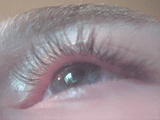
A twitching eyelid in action. Leitz31337 at English Wikipedia/CC BY-SA
In fact, twitchy eyelids are so common in the general population, that it would be difficult to pinpoint them as an actual symptom of a disease, if the twitcher has a disease. The twitching would be coincidental.
For example, take Parkinson’s disease. Certainly, many people with PD have twitching eyelids.
But so do many people with diabetes, heart disease, lupus, arthritic knees and Crohn’s disease.
Whether you’re healthy or not, twitching eyelids are just a fact of life.
“Eyelid twitching can be caused by many things that can be equated with magnesium deficiency such as stress, alcohol intake, fatigue, insomnia or too much coffee,” says Carolyn Dean, MD, ND, medical advisory board member of the Nutritional Magnesium Association at nutritionalmagnesium.org.
“The best way to find out is to take some magnesium and see if the twitching goes away.”
Besides, if this was a sign of a serious nerve disorder, there would be other symptoms along with the jumpy eyelids.
And these other symptoms would rank much higher on the list of bodily problems (i.e., difficulty swallowing food; difficulty walking up and down stairs; difficulty picking up eating utensils).
Eyelid twitching in isolation is not indicative of disease.
Causes of Eyelid Twitching
- General eye strain (too much computer time or too much reading)
- Fatigue
- And topping the list is stress and anxiety! And if you stress out over the twitching, you’ll probably twitch even more!
Here are THREE more causes: contact lenses, strenuous heavy weightlifting and rubbing or scratching the lid.
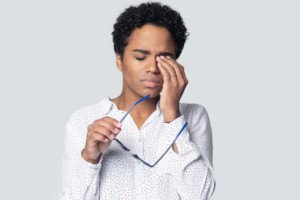
Shutterstock/fizkes
Chronic wearing of contact lenses can really irritate the eyelid muscles, making them twitch and jump.
Heavy weightlifting may cause the eyelid muscles to tense up. The tensing then causes twitching.
Irritants from cosmetics may also cause twitching.
Aggressive rubbing or scratching the eyelids can cause them to twitch.
Many eyelid twitchers report that twitching bouts can linger for weeks on end, then suddenly disappear, then suddenly reappear months later.
More causes of eyelid twitching — Dr. Dean gives these additional causes: alcohol, nutritional deficiencies, dry eyes and allergies.
Solutions
Drink plenty of water.

Freepik.com
Get adequate calcium and mineral intake (including magnesium citrate).
Gently rub the eyelid with a fingertip — and gently; aggressive rubbing can trigger twitching.
Don’t fret about your twitching eyelids — after all, they take a beating daily, blinking hundreds of times a day to protect your eyes from pollutants, dust, allergens, microscopic spores, sunlight and wind.

Dr. Dean, in practice for 35+ years and author of “The Magnesium Miracle,” is also a naturopath, nutritionist, herbalist, acupuncturist, lecturer and consultant.
 Lorra Garrick has been covering medical, fitness and cybersecurity topics for many years, having written thousands of articles for print magazines and websites, including as a ghostwriter. She’s also a former ACE-certified personal trainer.
Lorra Garrick has been covering medical, fitness and cybersecurity topics for many years, having written thousands of articles for print magazines and websites, including as a ghostwriter. She’s also a former ACE-certified personal trainer.
Twitching Muscles, DENTS, Calf Cramps: Facing the Terror
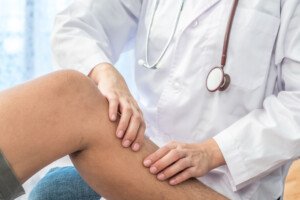
Here’s reassurance for those terrified of what their calf twitches, dents and cramps might mean.
Calf cramps, calf twitches, and calf dents are extremely common.
They are so common that few people talk about calf dents or calf twitches.
However, people DO talk about calf cramps because muscle cramps can be very painful.
It’s common for calves to cramp (as well as twitch or have dents), and there is no reason to think it’s ALS.
I’m a former certified personal trainer and have had many clients with lower leg cramps. Our goal was to increase the client’s dents!
A muscle dent that wasn’t there before was joyful news! This meant new muscle definition!
And that’s exactly what calf dents are: muscle definition you never noticed before.

Calves are a common location for harmless dents and grooves. Shutterstock/Jasminko Ibrakovic
Muscle definition can come and go, and this explains why you may be seeing something that you know for a fact wasn’t always there.
Muscle definition can come and go, because body composition often fluctuates due to changes in diet and physical activity.
There are two major calf muscles: the gastrocnemius and the soleus.
These are major force-production muscles that take a good beating in that they are used constantly in our daily lives.
Thus, it’s no surprise, including to orthopedic doctors, that the calf muscle group often tightens up — so much that it cramps and causes pain.
If you’re fearful of ALS, ask yourself how many times in your life so far, that:
1) You’ve had calf cramps in the past and thought nothing of them other than the annoyance, and
2) You knew someone who complained of calf cramps, but then years later, that person was still up and about and perfectly healthy.
Calf cramps are caused primarily by tight muscles, plain and simple.
Fitness experts see this all the time. Few people include calf stretching in their exercise routine.

Calf stretch. Freepik.com, katemangostar
If you use a gym, observe people stretching out.
- How many are stretching their calf muscles?
- It’s a very neglected muscle as far as being stretched on a routine basis.
- You’re probably guilty of this neglect, and thus, you have the cramps.
- Don’t panic with thoughts of ALS.
Another cause of the cramping is a lack of warm-up. And then there is simply being out of condition.
“Tight, contracted muscles can build up lactic acid,” says Carolyn Dean, MD, ND, medical advisory board member of the Nutritional Magnesium Association at nutritionalmagnesium.org.
“Lactic acid buildup produces pain and inflammation. This can happen to athletes and it’s why they often have to put ice on their muscles after a hard workout.”
Lack of hydration and an imbalance in calcium, potassium and magnesium can also cause lower leg cramps.
“Magnesium and calcium work together to make muscles move properly,” explains Dr. Dean.
“Magnesium guards the mineral channels that allow calcium to enter and leave a muscle cell.
“Calcium causes the muscle to contract and then it’s supposed to leave the cell.
“If there isn’t enough magnesium to push calcium out of the cell, you can get excessive muscle contraction.”
And that contraction is the twitching. Calves very commonly twitch. It’s the muscle speaking to you:
- I need a rest
- I need some water
- You are stressed; I’m here to help you run away from danger.
- I need more magnesium.
Calves may twitch due to anxiety, fatigue and exercise. Lactic acid buildup from exercise a day or two preceding a bout of twitching may be responsible for the twitching. Don’t let it alarm you.
Dr. Dean says, “Besides keeping calcium under control, magnesium is also responsible for reducing lactic acid buildup.
“You can soak in an Epsom salts bath or take magnesium citrate in water to reduce lactic acid.”
Muscle twitching can be very persistent and annoying, but as long as you are effortlessly able to walk or skip from Point A to Point B, there’s no reason to fear ALS.
DENTS!
Dents are part of your body’s normal muscle topography. Your legs are not filled with air. They are filled with muscle, many strips of muscle tissue.

Many visible dents. Shutterstock/Free around

More dents.
If you removed your skin, you’d see exactly what was causing the dents, fissures and grooves.
This is your anatomy showing through your skin. It will not be equal on both sides of your body.
Thus, a dent on one calf and not the other (with no weakness) does not mean you have ALS.
View an anatomy chart of the human body showing all the muscles. Study the calf region.
The way the various lower leg muscles overlap and merge with each other clearly explains why you see dents.
Please get some sleep tonight and stop punishing yourself with ALS fears.
You will probably be just fine. Drink plenty of water, stay away from full-length mirrors, wear long tight pants to discourage visual inspections for dents, and realize you are just like everyone else.

Dr. Dean, in practice for 35+ years and author of “The Magnesium Miracle,” is also a naturopath, nutritionist, herbalist, acupuncturist, lecturer and consultant.
 Lorra Garrick has been covering medical, fitness and cybersecurity topics for many years, having written thousands of articles for print magazines and websites, including as a ghostwriter. She’s also a former ACE-certified personal trainer.
Lorra Garrick has been covering medical, fitness and cybersecurity topics for many years, having written thousands of articles for print magazines and websites, including as a ghostwriter. She’s also a former ACE-certified personal trainer.
.
Top image: Shutterstock/DeepMeaning
Twitching Muscles, Hot Spots and ALS

Where are your muscle twitching hot spots, and could this mean ALS?
If muscle twitching has you concerned, particularly the so-called hot spots, then keep reading.
Hot spots can grab your attention and cause a lot of worry and concern, since muscle twitching can be a symptom of a deadly disease.
If you’ve been worrying about twitching muscles, then you probably already know that the muscle twitching of this fatal disease may very well begin in one spot.
Fasciculations (fancy name for muscle twitching) have a lot of people terrified they have a dreadful disease.
Thus, any hot spot of fasciculations, understandably, may have you “freaking out” and panic-stricken over the possibility that your days are numbered.
But the phenomenon of hot spot muscle twitching is completely normal.
“Muscles may randomly twitch for many reasons, and most of the time you don’t even feel anything,” says Carolyn Dean, MD, ND, medical advisory board member of the Nutritional Magnesium Association at nutritionalmagnesium.org.
“They can twitch due to anxiety or stress, a sleepless night, too much coffee or after exercise.”

Shutterstock/Kiselev Andrey Valerevich
Next time one of your hot spots (or maybe you have only one muscle twitching hot spot) acts up, ask yourself:
“Where has it ever been engraved in stone that muscle twitching can’t occur in one spot; that fasciculations absolutely must occur at several different locations at once?”
Obviously if your fasciculations are occurring all over your body, it’s not likely you’ll fixate on any one particular fasciculation.
However, if only one muscle is twitching, say the arch of your foot or a calf, then this becomes very noticeable: This fasciculation steals the show and hogs the spotlight!
The most common sites for fasciculation hot spots are (no particular order):
Arches of feet
Calves
Thighs (quadriceps)
Thumbs
Toes
Eyelids
But this doesn’t mean that if you experience fasciculations at any other site, that you should worry. No sir.
Any voluntary muscle (a muscle that you can move or contract at will) is capable of twitching.
People have reported fasciculations in their chin, nose, forehead, neck, elbow area, butt and even tongue.
In fact, benign tongue fasciculations aren’t all that uncommon.
Name one person who can stick out their tongue and keep it perfectly still.
Perhaps the most common hot spots for fasciculations, however, may very possibly be the eyelids and arches of the feet.
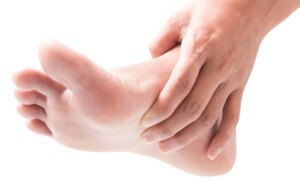
Shutterstock/MRAORAOR
And this makes sense, when you consider all the work that eyelids and foot arches must do day in and day out.
How many times a day do you think your eyelids blink?
They work to keep airborne debris from irritating your eyes. Sometimes, eyelid muscles just get fatigued and twitch as a result.
Eye strain from reading too much or spending too much time before a computer can also incite eyelid twitching.
Foot arches go through a lot.
They support you when you walk. They try to accommodate all kinds of footwear, including high heels.

Shutterstock/Alexandr Makarov
Sometimes, the muscles in your foot arch just get tired and fatigued, and twitching results.
Calves, too, work hard.
Thus, it’s not surprising that hot spot fasciculations occurs in these areas, especially calves, feet, and thumbs — another body part that’s busy all day long.
“When muscle twitching becomes frequent or chronic, that’s when you begin to consider an underlying cause,” says Dr. Dean.
“The most common one is magnesium deficiency. Magnesium is responsible for muscle relaxation, and when you don’t have enough, then, its sister-mineral, calcium, causes muscle contraction.
“Too much calcium and not enough magnesium can cause ongoing twitching.”

Dr. Dean, in practice for 35+ years and author of “The Magnesium Miracle,” is also a naturopath, nutritionist, herbalist, acupuncturist, lecturer and consultant.
 Lorra Garrick has been covering medical, fitness and cybersecurity topics for many years, having written thousands of articles for print magazines and websites, including as a ghostwriter. She’s also a former ACE-certified personal trainer.
Lorra Garrick has been covering medical, fitness and cybersecurity topics for many years, having written thousands of articles for print magazines and websites, including as a ghostwriter. She’s also a former ACE-certified personal trainer.
.
Top image: Freepik.com pressfoto
Source: alsa.org/about-als/symptoms.html
ALS Muscle Twitching vs. BFS Muscle Twitches: Key Differences?
What’s with the Enablers on “My 600 Pound Life” ?

Do the enablers in “My 600 Pound Life” have a mental illness?
They must have as much of a psych issue as do the super morbidly obese people they continue to bring enormous amounts of food to.
How often have you heard an enabler of one of the subjects of “My 600 Pound Life” say something like, “I bring her the food because it makes her happy”?
One must wonder what kind of parents these enablers would or do make. It’s easy to picture the following scenario:
“I let eight-year-old Mindie play alone in the street after dark because it makes her happy.”
“I let Johnnie skip school all the time and watch TV all day instead because it makes him happy.”
When 24-year-old Adele, the enabler to her 800-pound mother, Marla, said, “It makes her happy,” in reference to why she keeps bringing her bedridden mother gigantic portions of junk food, I thought:
“Will YOU be happy when you soon become the cause of your mother’s death?”
“Will your mother be happy in her final moments when she’s struggling to breathe from a heart attack?”
TLC should come out with another show called “My 600 Pound Life: Inside the Mind of the Enablers.” Or, we can just shorten that: “My 600 Pound Life: The Enablers.”
This popular show, for which I watch every episode, should have a spinoff series about the enablers.
The psychological forces behind the mind of an enabler to a 600 pound person would make an utterly fascinating series.
It’s just mind-bending how someone could be “afraid” of the person they enable, even though that person is:
- NOT providing financially to the enabler in some cases
- NOT capable of physically harming the enabler due to mobility limitations
- NOT capable of getting the enabler fired from a job
But in order for TLC to generate a spinoff series from “My 600 Pound Life,” they’d have to find enablers who are willing to be followed.
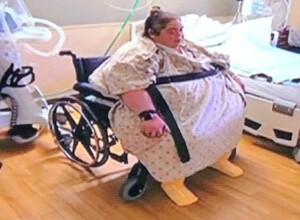
Questions Views Ask About the Enablers
What drives people like Adele, or the voiceless Dillon who enables his mother Pauline, to devote their entire lives to doing things like lifting the heavy folds of fat to clean out all the infected, pus-filled sores beneath them; to spend inordinate amounts of time shopping for junk food, then serving it to their parents, spouses or significant others — and sometimes the 600-pounder is a grown child, and the parents are the enablers.
What compels these enablers to have no life, to give up school, a social life, a romantic life, the possibility of a career?
They come across as devoted and loving, but they are in need of psychological help, and their behaviors are destructive—they are key contributors to the slow suicide of their loved-ones.
People do not become 600 pounds overnight.
In “My 600 Pound Life,” there has been an occasional subject who was mobile enough to require little enabling.
Chuck was one of them – able to get into a vehicle at will and drive out for fast-food. He was so mobile, in fact, that he even participated in loading a vehicle for his trip to Houston to see “Dr. Now.”
But in nearly all the other cases, there is at least one enabler. How can someone live like this?
I realize it’s more difficult for the enabler to cease this destructive behavior if they began taking care of a super morbidly obese parent during childhood.
But in some of the shows, the parent begins piling on weight (according to the subject’s story telling) when the enabler is either an older child or approaching young adulthood.
Furthermore, what’s going on with the enablers of spouses or significant others?
We can’t blame childhood patterns on this, since these enablers were not taking care of their spouses (or girlfriends) as children.
Maybe as children, they were taking care of a super morbidly obese family member, and that started the pattern.
There has to be something that went significantly awry in the emotional development of the enabler during childhood.
What they do is akin to repeatedly bringing alcohol to an alcoholic with liver disease.
- What kind of childhood potentially begets an enabling mindset?
- How is it that they are eventually drawn to the 600-pound subject’s way of thinking?
And the question specifically pertains to three types of enablers:
- The adult who’s been “taking care of” the super morbidly obese parent since childhood (we can see Liam, the very young son of the non-compliant Penny, being groomed to be her caregiver/enabler as he gets older).
- The adult who began “taking care of” the 600-pound parent at an older age or young adulthood
- The adult who hopped on the enabling train only after entering adulthood, because the subject is a significant other or spouse.
 Lorra Garrick is a former personal trainer certified by the American Council on Exercise. At Bally Total Fitness she trained clients of all ages for fat loss, muscle building, fitness and improved health.
Lorra Garrick is a former personal trainer certified by the American Council on Exercise. At Bally Total Fitness she trained clients of all ages for fat loss, muscle building, fitness and improved health.
Itchy Scalp Causes Include Shampoos, Brushing, Diabetes

An itchy scalp has many possible causes, including your shampoo, hair dyes, diabetes and dermatitis.
“Itchy scalps are usually caused by either dandruff or allergies,” says Dr. Joel Schlessinger, MD, board certified dermatologist and cosmetic surgeon with a private practice in Omaha, NE.
“Dandruff is often caused by a yeast overgrowth and can be coincidental with other dry, scaly issues such as facial dermatitis (seborrheic dermatitis) or even a slightly red rash on the chest area.”
The itch from seborrheic dermatitis may also have a mildly stinging component to it.
“If itchy scalp is due to ingredients in shampoos, there is a line, Free and Clear, that contains very few of the offensive ingredients (LovelySkin.com/Freeandclear). This line also has a conditioner and hair spray.
“Without having patch testing done, it is very difficult to determine whether this is allergy or, if it is an allergy, which ingredient is the culprit.
“Hair dyes are a very common cause of allergies and it is also important to realize that permanents can cause a variety of allergic or sensitivity reactions.
“If you suffer from itchy scalp it is best to seek treatment first from a dermatologist before undergoing coloring or other hair treatments.
“Generally, in my patients an exam can determine whether it appears allergic or dandruff related, but sometimes it is unclear initially. Treatments such as medications will often help to clarify the cause.
“If there isn’t any rash present, that is sometimes due to nerve related issues and that is an entirely different medical treatment process.
“Additionally, if there are sores or other situations such as lice or infections, your treatments may be quite different, but this is something that should be evaluated at the time of the appointment.
“Lastly, as far as other medical causes, while there are definitely some issues such as diabetes that can cause scalp irritation and infection, the root (no pun intended) of the problem is usually treated alongside the condition by your internist or family doctor.”
Additional Causes of an Itchy Scalp
Aggressive hair brushing can cause the scalp to become irritated, and hence, itchy.
The aggressiveness is in the form of pressing the bristles hard into the scalp.
Or, simply over-brushing (spending too much time doing this) can cause the irritation. Pressing a comb too hard against the scalp can do the same.
Do you use minoxidil (Rogaine)? The insert actually states that a possible side effect is an itchy scalp.
Lastly, not washing your hair enough can cause the scalp to itch — from accumulated grime.
 Dr. Schlessinger, founder of LovelySkin.com, has 25+ years of experience treating many skin conditions including melanoma. He’s founder of the Advanced Skin Research Center, a clinical facility that investigates new medications and treatments.
Dr. Schlessinger, founder of LovelySkin.com, has 25+ years of experience treating many skin conditions including melanoma. He’s founder of the Advanced Skin Research Center, a clinical facility that investigates new medications and treatments.
 Lorra Garrick has been covering medical, fitness and cybersecurity topics for many years, having written thousands of articles for print magazines and websites, including as a ghostwriter. She’s also a former ACE-certified personal trainer.
Lorra Garrick has been covering medical, fitness and cybersecurity topics for many years, having written thousands of articles for print magazines and websites, including as a ghostwriter. She’s also a former ACE-certified personal trainer.
.
Top image: ©Lorra Garrick
Scabby Dry Mole: Possible Melanoma or Benign?

A dermatologist answers if it’s possible for a scabby dry mole to be normal, or is this most likely a sign of melanoma?
“A scabby, dry mole can really be any number of things, including melanoma, but generally it is not melanoma,” says Dr. Joel Schlessinger, MD, board certified dermatologist and cosmetic surgeon with a private practice in Omaha, NE.
He further explains, “Other things that it can represent are seborrheic keratosis, which is a benign, familial growth or simply an irritated mole.”
A seborrheic keratosis can look like a melanoma, and in fact, this can very much resemble a mole, especially if you can’t get a good close look at it (i.e., it’s located on your back or the back of your neck).

Seborrheic keratosis
Not only that, but a seborrheic keratosis can suddenly start changing in appearance after looking the same for a very long time — making you think that the “mole” is changing and thus has transformed into melanoma.
“If you have something on your body that is changing and shows odd symptoms such as this [scabby dry mole], especially if it bleeds, it is time to see your dermatologist for an evaluation.”
Concerning Signs in a Mole
It’s beginning to develop a scabby appearance.
It’s becoming elevated when it’s always been flat.
It’s getting darker or changing into a different color.
It’s bleeding.
It’s developing a crusty look to it.
It’s getting bigger and more lopsided.
Tiny new moles are forming very close to it.
The inside of it is disappearing.
 Dr. Schlessinger, founder of LovelySkin.com, has 25+ years of experience treating many skin conditions including melanoma. He’s founder of the Advanced Skin Research Center, a clinical facility that investigates new medications and treatments.
Dr. Schlessinger, founder of LovelySkin.com, has 25+ years of experience treating many skin conditions including melanoma. He’s founder of the Advanced Skin Research Center, a clinical facility that investigates new medications and treatments.
 Lorra Garrick has been covering medical, fitness and cybersecurity topics for many years, having written thousands of articles for print magazines and websites, including as a ghostwriter. She’s also a former ACE-certified personal trainer.
Lorra Garrick has been covering medical, fitness and cybersecurity topics for many years, having written thousands of articles for print magazines and websites, including as a ghostwriter. She’s also a former ACE-certified personal trainer.
.







